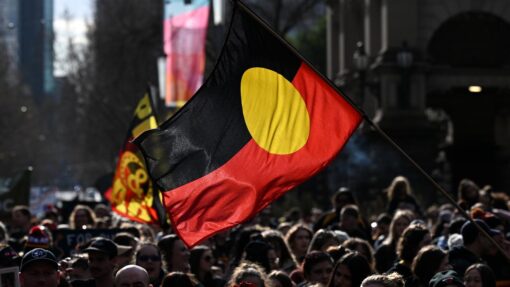Nuclear and renewables to battle it out at election
Kat Wong and Tess Ikonomou |
Australians will go to the polls with a choice on energy: renewables or the nuclear option.
The federal election, which must be held by May 2025, is shaping up to be a battle of energy policies.
Without publishing costs, the opposition on Wednesday vowed to build seven nuclear power plants at the sites of coal-fired power stations if they win the political contest.
The Labor government, on the other hand, has committed $22.7 billion over the next decade for its Future Made in Australia plan – which aims to increase investment from the private sector to key renewables in Australian industry.
“This election is a choice between two different energy policies,” Energy Minister Chris Bowen said.
“Our energy policy, which we’ve been very clear about and implementing, and their fantasy which they can’t answer key questions on.”
Labor politicians have already drawn attack lines.
MP Andrew Leigh posted a meme of a three-eyed Blinky Bill with Simpsons-style nuclear reactors, while Prime Minister Anthony Albanese warned the opposition leader’s plan would cost families.
“It makes sense for households to reduce their energy bills by having renewable energy, and just as it makes sense for an individual household, it makes sense for our national economy,” he told ABC Radio on Thursday.
“Peter Dutton is taking a radioactive sledgehammer to the Australian economy and Australian families will pay.”
Mr Dutton said he would feed more details to the public in due course, and condemned the government’s “scare” tactics.
“We have taken a deliberate step not to be held hostage by the Labor Party in the scare campaign,” he told ABC.
“We want the information out there in bite-sized bits so that people can consume exactly what it is that we’re proposing and understand what it’s not proposing.”
The costs of the reactors would also be announced before the election, Shadow Treasurer Angus Taylor assured.

But even without specifics, the opposition’s plan is already being picked apart.
Curtin University Sustainable Engineering Group’s Liam Wagner rubbished Mr Dutton’s proposal to rely on the Westinghouse-manufactured AP1000 reactor, saying the AP1000 had consistently been late in its build time and was over budget.
“It would be irresponsible to seek that as the preferred option, given the significant delays that it’s faced in installation in the US,” Associate Professor Wagner told AAP.
“It’s essentially like ripping up $100 bills.”
The sites nominated for nuclear plants include Loy Yang Power Station in Victoria, Callide and Tarong in Queensland, Mount Piper at Lithgow in central west NSW and Liddell in NSW’s Hunter region.
Small, modular reactors would also be built at Northern Power Station in Port Augusta and at Muja Power Station, southeast of Perth.

Prof Wagner savaged the coalition plan as an “absolute joke” and questioned if they had checked the locations announced were appropriate for nuclear plants.
“We would need to have significant geological investigation into those areas, whether they would be suitable to have that type of plant built there,” he said.
“Are they the right places to install them based on the geological properties of that area? I sincerely doubt that the opposition has sought an opinion on that.”
On the coalition’s pledge that the first two nuclear power plants would be built between 2035 and 2037, Prof Wagner said it was “extremely unlikely”, citing a lack of human capital.
“It is undoubtedly extremely difficult to build them and highly technical,” he said.
“Even if we were able to procure the right people to build it, I sincerely doubt that it would be built by 2035 … it’s just not feasible.”
Mr Dutton said the planned rollout is sensible and achievable.
The CSIRO in May reported the first nuclear plants would not be achieved until 2040 at the earliest.
AAP


